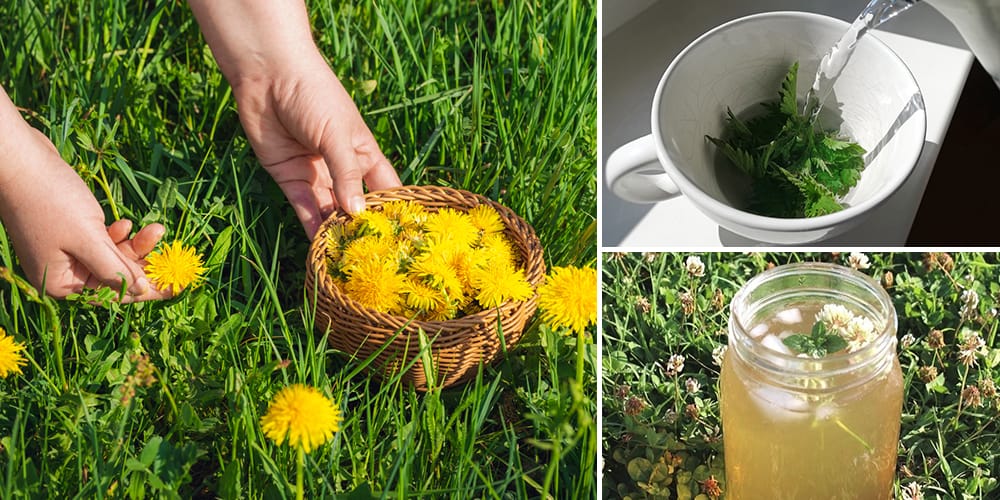
Top 5 Herbal Remedies to Make This Spring
Who does not love spring? It is the time of the year when the temperature becomes pleasant and we leave the cold weather behind. As the vegetation regrows with life, many of us look forward to foraging the wild for precious things that the spring brings.
Some of the plants are but mere weeds to us as they invade our lawns. However, many of the humble plants that we uproot and deadhead may be very beneficial if we know how to make better use of them. So, let’s dive in!
Top 5 Herbal Remedies to Make This Spring
Instead of running a lawnmower over them, here are some of the beneficial spring plants you will most likely find in your yard. We also include recipes to help you figure out what to do with them and for what purpose they serve best.
Dandelion
Dandelion (Taraxacum officinale) is admittedly a notorious garden weed but is also a very therapeutic one. Traditionally, it is used to cure jaundice and many liver diseases. It also helps in regulating the blood sugar level, treating water retention and improving digestive functions.
All parts of the dandelion are edible and make a great addition to salad. But, its dried roots and leaves are the most potent when it comes to medicinal properties.
Dandelion is a rich source of Vitamin K that aids in blood coagulation and better bone mineral density. Among its important nutrients are Vitamins A, C and E for boosting the immune response. These are essential in combating common diseases that come with the changing seasons.
Here’s how to make a potent dandelion tea which may also replace your morning cup of coffee.
Dandelion Root Tea
You need 1 cup fresh dandelion roots.
- Collect and thoroughly wash dandelion roots.

- Chop the roots or process them in a food processor until roughly chopped.

- Dry them in the food dehydrator or low-heat oven. You can also sun dry them until thoroughly dried but it may take time.
- Once dried, roast them in a 350ᵒF oven until brown but not burnt.
- Put 2 tbsp of the roasted roots in a pan and add 2 cups of water. Simmer for about 20 minutes or until the water is halved, strain and enjoy the dandelion tea hot. You can add sweeteners like honey or maple if you want.

Stinging Nettle
Stinging nettles (Urtica dioica) are one of the many weeds you may want to eliminate from the garden. The plant is covered with numerous stinging hairs that can cause contact dermatitis. But, soaking the young leaves in water will remove the stinging chemicals to make them edible.
Nettle is rich in nutrients and is often cooked as a potherb and may also be taken as a tea or leaf extract. It is efficient in removing kidney stones and treating bladder infections and related illnesses.
If you have arthritis, UTI, allergy, asthma or menopausal symptoms, prepare this easy nettle tea to relieve your pain and discomfort.
Stinging Nettle Tea
You need half a cup fresh nettle leaves.
- Harvest stinging nettle using gloves.

Boil 1 cup of water and pour it over fresh nettle leaves.

- Strain the mixture into a cup before drinking.
⇒ As an alternative to making your own nettle remedy, you can get a potent Stinging Nettle tincture here
Plantain
Plantain is also a common perennial weed that is usually abundant in tropical climates. Plantain can be broadleaf (Plantago major) or narrowleaf (Plantago lanceolata) and both bear leafless flower stalks. Regardless of the variety, all plantains have the same medicinal properties.
Plantain is a versatile spring remedy that can be prepared as tea, infusion, tincture or salve. Its leaves can be used as poultice to treat insect stings, sunburn, poison ivy irritation or to draw out splinters. When wet or crushed, plantain leaves and seeds become mucilaginous and adhere to the skin when applied.
Although the plant is edible and can be used as a vegetable, plantain is most popularly used as a topical. Here’s what you can do with this abundant medicinal weed to make it last for better use.
Plantain Infused Oil
You need dried plantain leaves and olive oil.
- Gather, bunch and hang fresh plantain leaves upside down to dry until crispy.

- You may use a food dehydrator or oven to speed up the process, drying the leaves until they snap when bent.
- Crumble the leaves and fill a mason jar halfway with them.
- Add olive oil into the jar, leaving about an inch of space from the brim. Stir the jar gently to submerge all the leaves and release the gas pockets.
- Set the jar aside in a cool and dry place to infuse for at least 4 weeks. Strain and transfer to another clean jar.
Plantain Salve
You need 3 parts plantain oil and 1 part beeswax.
- To make the plantain salve, heat a pot of water.
- Put the plantain oil in a double boiler or heat-resistant container that will fit inside the heated pot of water. Add the beeswax pellets or other vegan wax of choice to the plantain oil.
- Place the container over the hot water and stir until the beeswax melts.
- Remove from heat and transfer to a clean jar.

If you want to learn more about how to correctly identify medicinal plants, mushrooms, berries, and how to spot poisonous lookalikes, here is a useful guide.
Chickweed
If you are sick and coughing, check your backyard for some chickweed to bring you comfort. Chickweed (Stellaria media), also known as mouse ear or starflower, is an excellent expectorant and immune booster. It is also a remedy for urinary tract infections and relieves inflammation and pain.
Chickweed can be consumed as a hot tea. Infusing its fresh leaves in oil produces a potent topical that can be used for urticaria, wounds and other skin problems. It may also help manage obesity and lower cholesterol levels while cleansing the body from toxic wastes.
Chickweed is most effective when taken as a tincture. It is taken to improve the lung, digestive and urinary conditions as well as boost the immune system.
Chickweed Tincture
You need ¾ cup chickweed leaves.
- Forage fresh chickweed. Airdry and finely chop them.

- Place ¾ cup of the leaves in a clean mason jar.
- Pour 1 cup of good quality vodka to completely cover the leaves.

- Keep the jar in a dry place away from direct sunlight for 4 to 8 weeks, shaking the jar every couple of days.
- Strain and transfer the tincture to an amber glass bottle with a dropper cap.
White Clover
White clover (Trifolium repens) blooms in spring and by early summer, its flowers will attract pollinator bees. But more than this use, it is also a beneficial plant with analgesic properties that may help alleviate arthritic pain.
A tincture made of white clover leaves can be applied as a topical remedy for gout. Its infusion may cure dry cough, fever and other symptoms of cold. An infusion prepared from the flower heads makes an excellent eye wash and for cleaning boils and sores.
Here is a refreshing white clover iced tea tonic to cool you down and boost your immune function.
White Clover Tea
You need 1 cup fresh white clover blossoms.
- Put the blossoms into a cup, or jar, and pour 4 cups boiling water over it.
- Steep for at least 30 minutes and strain. You can also add ice cubes for a refreshing drink.
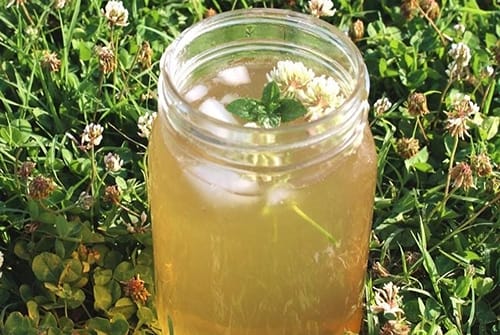
Different growing regions produce different spring weeds and herbal remedies. Considering this factor, you can even choose to grow your own medicinal garden.

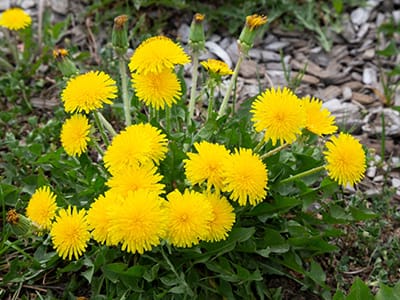
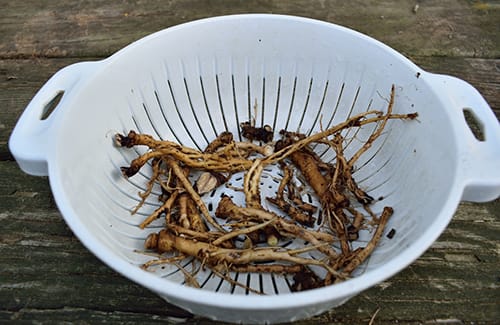
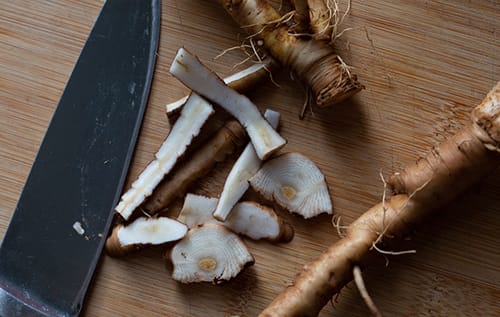
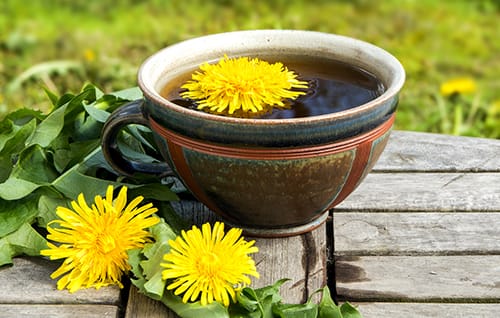
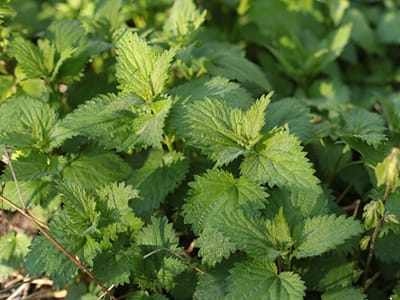
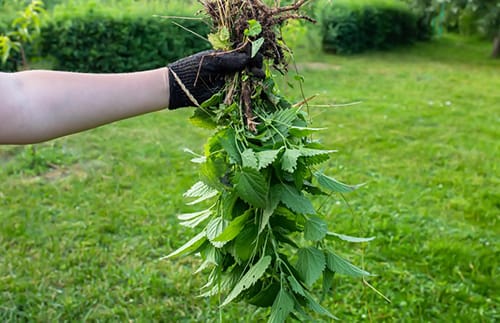
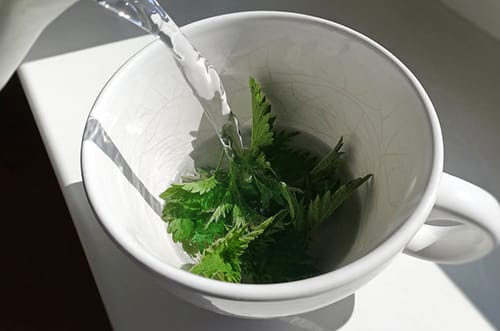
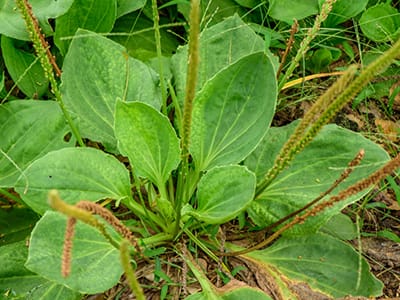
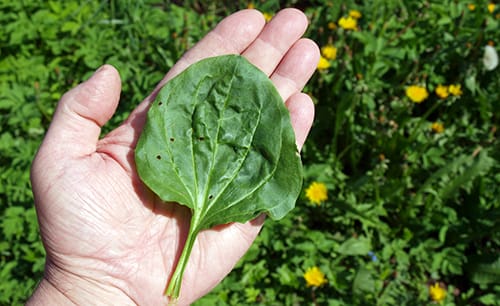
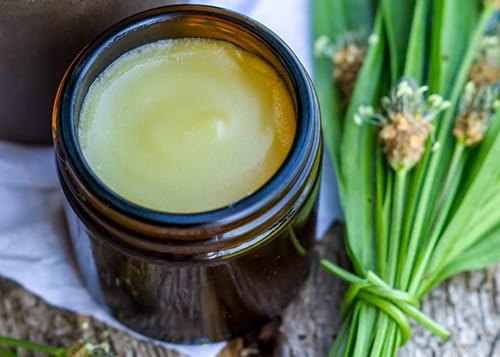
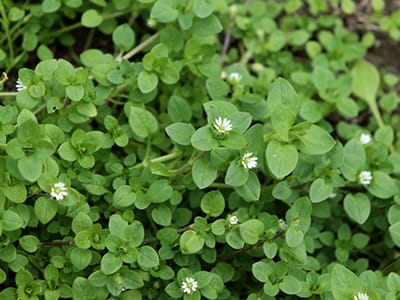
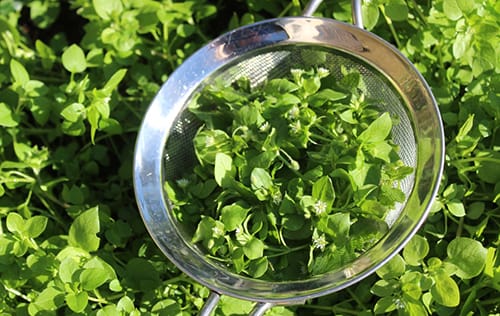
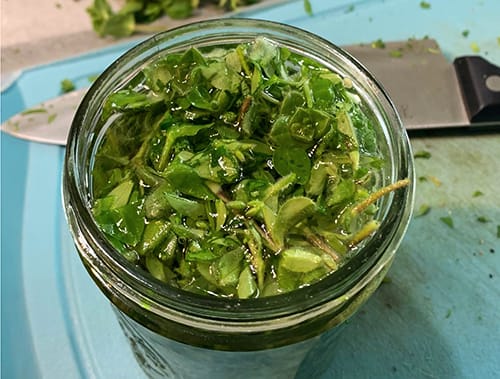

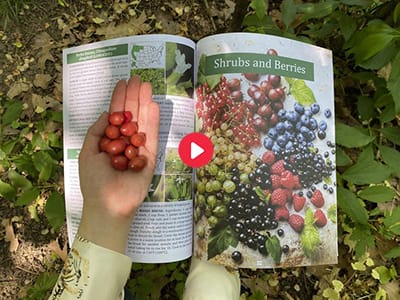
Great easy items to find! Thanks
Hi Larry,
That’s great news! Let us know if you forage any of these plants to prepare some home remedies.
Many blessings and good health!